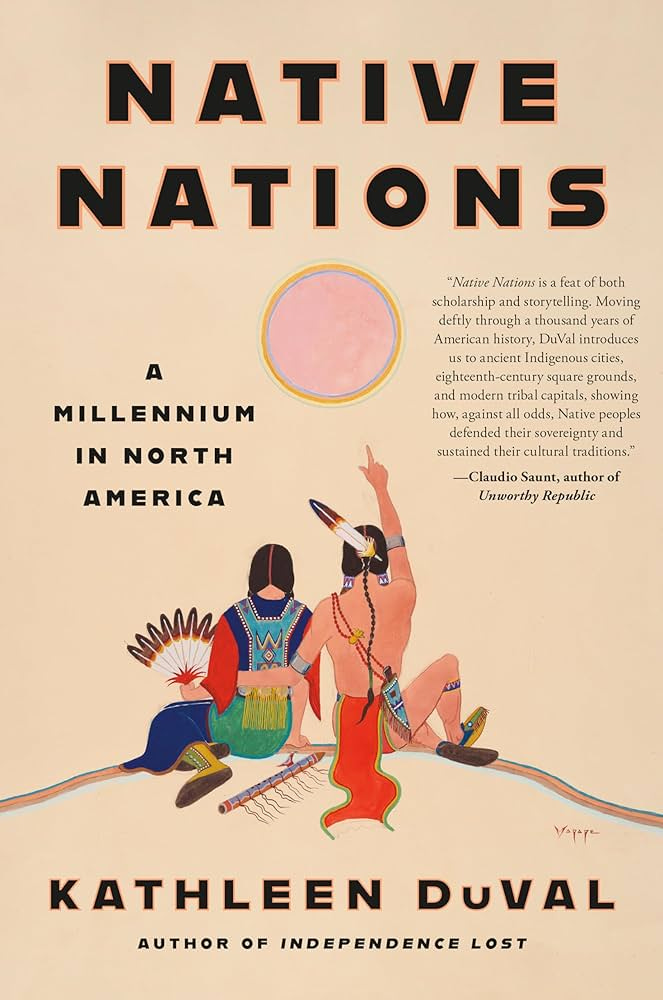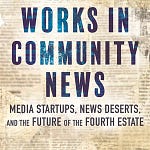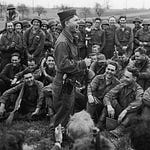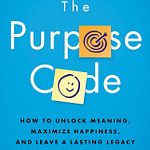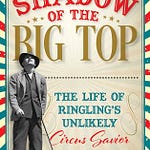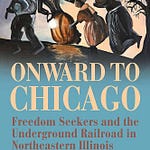Kathleen DuVal’s Native Nations leaves you shaking your head.
A history professor at the University of North Carolina, DuVal provides a view of this country’s colonial history we never got in school.
This history comes from those who were here when the French, British, and Spanish landed on North American shores. Her detailed account (the footnotes alone are an informational storehouse) raises the curtain on the American stage, letting us see—perhaps for the first time—the power and diversity of the American Indian.
Native Americans held the upper hand in most engagements with European colonists between 1600 and 1800, noted DuVal. Few of those colonists arrived in time to view urban America in its first form, exemplified by sites like Cahokia, near St. Louis, which reached a peak around 1100, she said.
Instead, native states developed across North America with their own customs and language, noted DuVal.
“As Spanish, Dutch, French, and British colonists struggled to put down roots, local tribes mostly avoided them, preoccupied with their own blood feuds and fitful alliances. But they were also budding entrepreneurs. They sought advantage among outposts such as Jamestown, New Amsterdam, and Quebec, enriching themselves through barter and luring Europeans into their conflicts,” noted Hamilton Cain in his review of Native Nations.
We’ve all heard about Manhattan being sold for $24 worth of beads but think again if you assume Native Americans were gullible traders, said DuVal, pointing out that the lucrative fur trade that so excited Europeans allowed Native Americans to acquire items such as guns, metal cooking utensils, and linen in return.
The Mohawks “came to Fort Orange (now Albany, N.Y.) for the guns but they stayed for the cake,” wrote DuVal. After sampling cakes and cookies that Dutch bakers produced, Mohawks drove the prices of baked goods beyond the range of many Dutch colonists in the area, she said.
The story of the American Revolution is related through Indian eyes this time, a view that exposes the many moving parts of a conflict that DuVal plans to explore in her next book.
After the revolution, Native Americans convened in St. Louis, on the site of one of Cahokia’s vacated satellite cities, in 1784. The discussion centered on the threat posed by this new country, whose people were more ambitious and more numerous than the British they deposed. The threat of U.S. expansion to Native Americans was perceived as “a plague of locusts.”
As the United States grew, native people were driven further west. The resulting collision between a determined U.S. government and Native Americans is one history most of us are already familiar with.
Some Native Americans called for a united front to resist the threat. One of those was Tecumseh, the Shawnee leader who, with his brother Tenskwatawa, traveled widely to unite tribes in opposition to the government.
DuVal notes that Tecumseh, lauded as a brilliant speaker, visited Potawatomi towns and the towns of the Peorias on the Illinois River in 1805. That probably means he was one of the first of many great orators to speak in Peoria.
Despite government policy often seeming hellbent on extermination, Native Americans have survived, wrote DuVal, who cites an American Indian renaissance in the late 20th and 21st centuries.
“Even as Native communities continue to struggle with poverty, healthcare crises, and the weight of historical loss, they are reinvigorating language and traditions and exercising new political and cultural power,” she noted.
DuVal credited recent wide-ranging research that made Native Nations possible. “Twenty years ago, I couldn’t have written this book,” she said.
Works like DuVal’s show that history can be enlightening—however painful.
We have so much to learn




